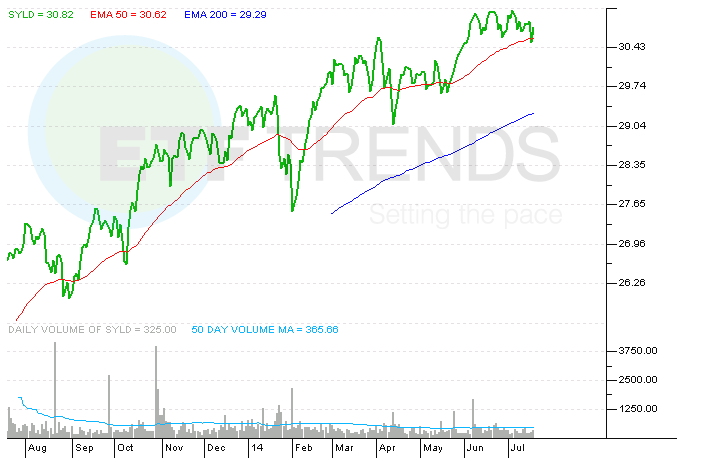For All its Repurchases, IBM Isn’t a Factor in Buyback ETFs
International Business Machines (IBM), the second-largest component in the Dow Jones Industrial Average, has traded mostly in-line with the blue chip index this year, meaning Big Blue is up almost 4%.
That is not terrible, but not impressive when considering 12 Dow stocks are up at least 5% for the year. What IBM has been good at is buying back its own stock. In the second quarter, New York-based IBM repurchase $3.7 billion of its own shares, reducing its shares outstanding count below 1 billion for the first time since at least 1999, reports Alex Barinka for Bloomberg.
In the first quarter, the only S&P 500 company to repurchase more of its own stock than IBM was the company’s new partner, Apple (AAPL). However, all that share repurchasing has yet to make IBM a factor in exchange trade funds that use buybacks as part of their weighting criteria. [No Apple, no Problem for Buyback ETFs]
The PowerShares Buyback Achievers Portfolio (PKW) is the largest buyback ETF with $2.87 billion in assets under management. Technology is PKW’s second-largest sector weight at 16.4%, but neither Apple nor IBM reside in the fund. The reason why is simple.
The NASDAQ US BuyBack Achievers Index, PKW’s underlying index, mandates that when additions are made to the index in January that those companies must have reduced their shares outstanding count by at least 5% in the trailing 12 months. The index rebalances periodically throughout the year, but only adds new constituents in January, so IBM (and Apple) cannot join PKW until January 2015 at the earliest. [Buyback ETF Still Shines]
The other two ETFs that use buybacks as part of their evaluation criteria – the Cambria Shareholder Yield ETF (SYLD) and the TrimTabs Float Shrink ETF (TTFS) – allocate a whopping 1% to IBM with all of that coming from TTFS.
IBM’s exclusion from SYLD is also easily explained. The actively managed considers three factors in its evaluation process: Dividends, buybacks and debt reduction. [Advantages of the Shareholder Yield ETF]
All those share repurchases are weighing on IBM’s balance sheet. “Total debt climbed to $44 billion in the second quarter, up from $39.7 billion a year ago. IBM had a cash balance of $9.7 billion at the end of the period, down from $10.4 billion,” according to Bloomberg.
To that end, IBM would appear to be an unlikely addition to SYLD and potentially vulnerable to removal TTFS. It must be noted that is just speculation on our part, but TrimTabs, the subadvisor for TTFS, has said it prefers companies that use free cash flow to repurchase stock over those that issue debt to do so. [A Look at the Float Shrink ETF]
IBM’s credit rating is firmly in investment-grade territory, but the debt expansion and free cash reduction do not bode well for the stock’s potential admission to SYLD. IBM’s free cash flow surged in the second quarter, which could help solidify its place in TTFS, but a slowing pace of buybacks could also make it harder to reach the 5% reduction necessary to enter PKW.
Said another way, IBM is one of the most voracious share repurchasers among U.S. companies, but even that may not be enough to grow the stock’s buyback ETF footprint.
Cambria Shareholder Yield ETF
Tom Lydon’s clients own shares of Apple and TTFS.

